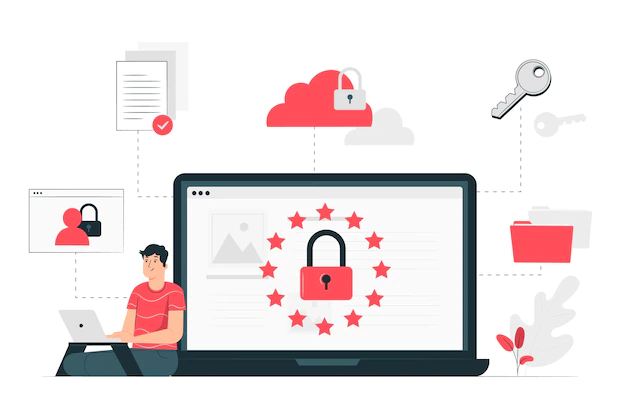Essential Actions To Do In Order To Make Your Program GDPR Compliant
More than 4 years have passed since the General Data Protection Regulation was initially enacted by the European Union (GDPR). Everyone who has anything to do with the app sector must now adhere to the privacy rules or face fines of up to €20 million. We’ve added this resource to help companies and developers understand and implement the General Data Protection Regulation (GDPR).
Do you need to follow the guidelines of the General Data Protection Regulation (GDPR)?
If you answered yes to at least one of the questions, you are a prime candidate for the General Data Protection Regulation (GDPR). Therefore, you should immediately begin educating yourself on the requirements of the GDPR. Using the end-to-end encryption solution is essential here.

How to Ensure GDPR Compliance
Question if you need all the information you collect.
One of the first steps in making software GDPR compliant is to determine what sort of personal data it stores.
Encrypt all sensitive information.
The encrypted information is incomprehensible to anybody who does not have access to the corresponding decryption keys.
The reality is, as any expert in the subject of cybersecurity will tell you, that data breaches are inevitable.
Data like names, emails, and physical addresses were stored in plain text, making it easy for anybody to exploit the information for retribution. Due to this negligence, many relationships, careers, and finances have been destroyed. Methods of pseudonymization work perfectly here.
If you’re developing an app, HTTPS should be a top priority.
It is common practice for “contact us” forms to ask for contact details such as email addresses, phone numbers, and physical locations. By keeping and sending this information in plain text, you are essentially begging hackers to get access to your system.
Make sure you have the appropriate permissions in place.
Don’t even think of relying on pre-determined answers. Your permission forms must include “no” as the default option or be left blank. Your users will not need to take any particular action to opt-out under these conditions. No or a blank space must be the default option on your consent forms. In such a case, your users won’t need to take any special steps to avoid receiving these messages. Choosing the proper certificate without protocol vulnerabilities is essential here.
Adopt a more nuanced opt-in system
If you’re running a website for promotional purposes, you must maintain constant contact with your visitors. You must first get explicit consent whenever you handle data in any way, shape, or form.
There should be three separate opt-in boxes on your consent form if you wish to receive marketing communications by email, phone, and snail mail.
The specifics of the outside parties must be stated clearly.
Customers’ consent to sharing their personal information with third parties is contingent upon your ability to clearly and accurately identify each recipient of that data in the consent forms.
File your acceptance of the Terms and Conditions in a different folder from the rest of your permission slips.
Before any personal information may be processed, you’ll need to submit a separate request for an agreement to the Terms and Conditions.
The Terms and Conditions section needs more emphasis.
According to the General Data Protection Regulation (GDPR), it is illegal to bury your Terms and Conditions in the legalese of a contract or otherwise make them difficult to find. The two-factor authentication option is essential here. There is a possibility that the following system is no longer acceptable under the new law:
- Users will be prompted to confirm that they have read the Terms and Conditions and agree to abide by them before being granted access to your app.
- When sending information to a payment processor, delete any identifying details.
- This stage has to be finished successfully to construct an e-commerce application.
- If you accept payments through a gateway, you are likely gathering customer data. Most of the time, you won’t need to update your system since this data is permanent.
- The laws protecting personal information make it clear that this kind of conduct is unacceptable.
Users should have the option to not participate in your business intelligence monitoring.
It is common practice for e-commerce companies to track a customer’s behaviors and interests to better tailor recommendations. The General Data Protection Regulation (GDPR) calls for unambiguous consent before carrying out such operations. Also, you’ll have to detail the process by which and the duration for which users’ information will be stored in your systems. If a user chooses not to have their activity recorded by your website, you must respect their decision.
Purge information on subscribers who have opted out
The best e-commerce platforms keep tabs on their customers’ habits and like to tailor their recommendations better. For such operations to be legal under the General Data Protection Regulation (GDPR), the user’s express consent is essential. In addition, you’ll need to detail how and for how long this information will be stored in your systems for users to understand and consent to.
In conclusion
After reading this, you should have a firm grasp on what is required of you to comply with the GDPR. The ability to ensure the security and transparency of your application will be a substantial competitive advantage in the future that puts a higher premium on personal privacy. Using this GDPR compliance checklist for software development, you can set yourself apart from the competition and carve yourself a unique niche in the competitive markets.
